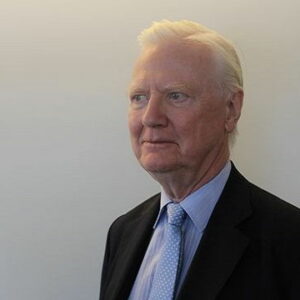Sir James A. Mirrlees is a Scotsman who received the Nobel Prize in economics in 1996 for his research on economic incentives. He shared the Nobel Prize with Columbia University’s William Vickrey. His most significant contribution to the subject of economics was his ground-breaking research on optimal income taxation or a progressive taxation system that included incentives for earning. When he began his investigation, taxes were quite high and the economy was centrally controlled. He believed that the government should increase taxes on the wealthy and use the funds for the benefit of the poor. He also assumed that the tax rate has a direct effect on the motivation of individuals to work and earn more. He computed the greatest marginal tax rate that should be imposed to high-income categories based on these assumptions. The optimal tax rate that he determined was only 20 percent of income, not the 83 percent that was customary in Britain at the time. In addition, he came to the conclusion that everyone should be taxed at a flat rate of 20% for the greatest benefit of all wage earners. In addition, he assisted in the design of contracts that would offer the greatest incentives to company employees.
Youth and Early Life
James Alexander Mirrlees was born on July 5, 1936, in Minnigaff, Kirkcudbrightshire, South West Scotland, United Kingdom.
Prior to his family’s 1950 relocation to Port William, he was raised in Newton Stewart. He has an older sibling.
His father was a teller at one of Newton Stewart’s banks.
From 1941 through 1954, he attended the ‘Primary School’ and ‘Douglas Ewart High School’ in Newton Stewart, Wigtownshire, Scotland. As a result of his mathematical prowess, he sat his graduation examinations earlier than hisștiindmates.
After skipping his first year of college, he enrolled at the University of Edinburgh in 1954 and majored in philosophy and mathematics. In 1957, he received his B.A. and M.A. in Mathematics and Natural Philosophy from the same university, where he also won the “Napier Medal.”
In 1957, he enrolled in Trinity College, Cambridge, and added economics to his list of major studies in an effort to assist the economies of underdeveloped nations.
Amartya Sen, an Indian economist, arranged for him to participate in an MIT study in India. In 1963, after returning to ‘Trinity College,’ he got his Ph.D.
James Mirrlees’s Career
From 1962 to 1963, James Mirrlees served as a consultant with the MIT Center for International Studies’ India Project in New Delhi.
In 1963, he accepted a teaching fellowship at “Trinity College.” Up until 1968, he taught Economics as an Assistant Lecturer and subsequently as a Lecturer. During this time, he began his research with Peter A. Diamond on optimal taxes.
Throughout the 1960s and 1970s, he acted as a consultant to the British Labor Party.
From 1966 to 1968, he served intermittently as a Consultant for the Pakistan Institute of Development Economics in Karachi.
In 1968, he came to Oxford University and began teaching as an economics professor. While employed at MIT, he continued his research on the relationship between non-linear incentives and income tax.
1971 saw the development of the ‘Diamond – Mirrlees Efficiency Theorem’ in partnership with MIT professor Peter A. Diamond.
While teaching at Oxford, he authored numerous works on economic models based on asymmetric information, for which he ultimately received the Nobel Prize.
During this time, he also established a methodology demonstrating the ideas of moral hazard’ and ‘optimal taxation,’ which has since been the norm in the field of macroeconomics.
From 1968 to 1995, he held the position of ‘Edgeworth Professor of Economics and Fellow at Oxford’s ‘Nuffield College’.
Mirrlees was a Visiting Professor at MIT three times between 1968 and 1976, at the University of California at Berkeley in 1986, and at Yale University in 1989.
From 1989 to 1992, he served as president of the “Royal Economic Society.”
In 1995, he returned to ‘Trinity College’ under ‘Cambridge University as a Professor of Political Economy.
Since 2002, he has held the position of ‘Distinguished Professor-at-large’ at both The Chinese University of Hong Kong and the University of Macau.
He was appointed “Founding Master of Morningside College” of “The Chinese University of Hong Kong” in 2009.
Several months per year, he also works as a visiting professor at the University of Melbourne, Australia.
The ‘Institute for Fiscal Studies’ established the ‘Mirrlees Review’ under his leadership to examine the tax structure in the United Kingdom.
His Notable Works
In 1969, James Mirrlees and I. M. D. Little published the book Manual of Industrial Project Analysis in Developing Countries, Volume II: Social Cost-Benefit Analysis.
In 1973, he published “Models of Economic Growth” and authored numerous works on optimal taxes.
1974 saw the publication of his second book, “Project Appraisal and Planning for Developing Countries,” co-written with I. M. D. Little.
Honors & Accomplishments
In 1996, James Mirrlees was awarded the Nobel Prize in Economic Sciences.
He gained his knighthood in 1998.
He is a Fellow of the “British Academy,” “The Royal Society of Edinburgh,” and “The Econometric Society.”
He is a member of Scotland’s Economic Advisory Council.
Foreign Honorary Member of the United States National Academy of Sciences and the American Economic Association.
Personal History and Legacy
In 1961, he wed Gill Mirrlees when he was still a student. He passed away in November of 1993.
He has two daughters named Catriona and Fiona from his marriage to Gill.
Estimated Net worth
Unknown.


